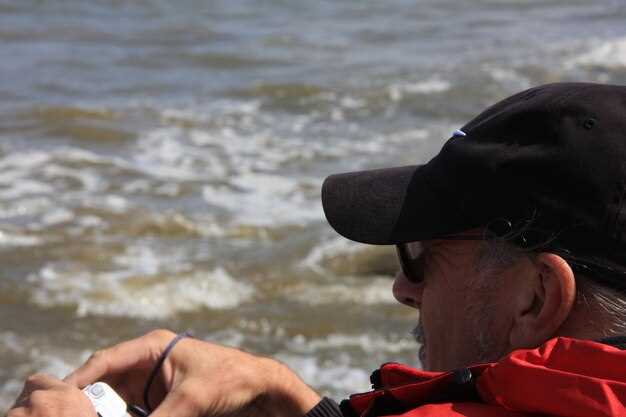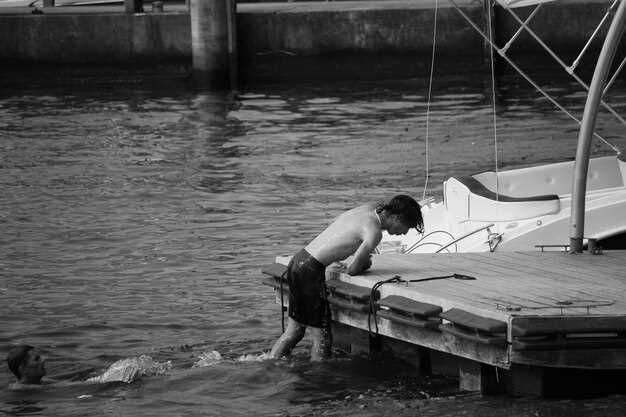Start by checking live weather advisories and securing safety gear before any water venture. Ensure a recorded plan for escape routes and confirm rescue contacts are on hand.
Reports describe the moment when the gust punched the hull and the craft was dragged over the swell, while the amputee passenger, left with crutches, remained inside but was moved to a secure position as the crew checked safety lines and announced a temporary shelter plan.
In online footage, the scene was recorded and circulated by viewers as a storm-chasing event drew attention from authorities. The video includes the sound of creaking fittings and a sensation of wind on wet canvas, driving onlookers to comment as the clip circulated without commentary. Despite hazard, the subject tried to maintain control, while observers logged data about breaking waves and other hazards.
This analysis helps readers understand when to retreat, how to document events, and what decision criteria authorities use; choosing the right protocol when safety lines hold and when to abandon the attempt. If injuries occur, hospital transport could be arranged, done in coordination with the coast guard, and reports to follow. Checking procedures after action will inform future drills when the aim is to improve readiness.
Practical breakdown of the incident and public response
Do not stay on a watercraft during a severe storm; seek solid shelter and follow official advisories.
Timeline and vessel status: thursday morning, some time, a local resident attempted to weather the storm afloat on a compact craft, leaving the slip as gusts intensified. The craft launched from the quay and remained afloat despite hellish winds and breaking waves; possession of life jackets and signaling gear was noted on scene. Early actions to steer toward sheltered lines were made by the operator, with additional attempts to regain control as conditions worsened.
Public response and media coverage: footage circulated on tampas-area platforms, drawing attention from morning viewers and local residents. The clip was shared across media networks, prompting breaking conversations about safety and accountability. On scene, gary, an officer on nearby duty, warned that attempting the move would endanger responders and others, and urged leaving the waterway. The incident sparked scare among some observers, while others debated responsibility and the boundaries of sensational content. youre reminded to consider the risk before sharing. The discussion touched on income and resources for waterfront businesses, with stakeholders noting potential effects on local lines of commerce and tourism that were envisioned for the day.
Enforcement and policy implications: Police and officers signaled possible consequences for reckless behavior; jail time could be pursued if such actions endangered others. The response toward this event highlighted how enforcement lines and public outreach must coordinate across agencies. Possession of dangerous equipment and leaving designated safety zones were cited as potential charges, and the case prompted officials to offer clearer guidance for future incidents so the public understands expectations and penalties.
Practical guidance for residents and communities: prioritize shelter and official alerts, and avoid risky on-water attempts during severe weather. Build a quick-response plan that includes safe anchors, ready-to-go supplies, and a clear communication line to report hazardous acts. Include resources and income considerations in preparedness, so youre not relying on informal channels when danger escalates. Platforms that distribute updates should be used to verify the latest advisories, and footage should be shared responsibly to prevent unnecessary panic. If youre in a high-risk area, leave shoreline zones early and head toward established shelters; local authorities offered maps and routes to help you move toward safety without delay.
Timeline: key moments from impact to social-media posting
Create a timestamped master log of impact moments with verifiable sources and visuals, and ensure the record can be reviewed without ambiguity.
- Late morning: impact along the coastline escalates; a local resident remained on a watercraft to weather the storm; witnesses tell of perpendicular gusts and rolling swells, while responders document conditions and begin safety checks.
- Morning: reports name the individual; he claims to be managing the craft to endure the event; the plan envisioned beforehand was to shelter, but conditions forced him to stay exposed; no misdemeanor charges were filed at this stage.
- Point mid-morning to afternoon: a clip recorded by a bystander captures the action on deck; the footage records rigging and crew motions; authorities say they will document the scene without sensationalism and use it to verify statements.
- Morning to midday: a person with injuries is transported to hospital; health services report several injuries, with some patients admitted in stable condition; the government coordinates response and issues initial guidance.
- Afternoon: military assets deploy to assist; authorities say the individual was claiming to remain with the craft as others prepared for possible evacuation; crew radios reference the captain, nicknamed dans, in logs as operations proceed.
- Evening: government statements reiterate safety guidance; several updates emphasize source reliability and warn against misinformation; the point is to include official channels, to make the record precise, again shaping public understanding.
- Post-helene comparisons: several observers note how this event echoes patterns from hurricanes in the same region; the discussion informs better emergency-response planning and policy implications.
- Late night: reports show the moment of hitting the shoreline; clips circulated on the platform and were recorded by witnesses without official context; authorities urge following government channels for accurate information.
Claim verification: assessing evidence behind Malinowski’s account
Recommendation: verify core claims by checking the original footage and independent media coverage with precise timestamps, then corroborate with weather and maritime records around the event.
Begin by checking around early and late moments: did the central claim come via a livestream or in a formal statement? If the source is an anchor or a user account, demand multiple checks from several sources to reduce bias.
Content that goes virally often says different things; the caption sometimes helped spread misinformation. Verify whether the central claim came from a livestream or a formal statement, and check whether the account came from an anchor or from a user. If the claim says someone came ashore near a pier, verify with geolocation clues and late corroboration from authorities, and seek only corroboration from independent sources.
When weighing credibility, compare what Malinowski says with what others insist; more than one observer should align on the key actions. If a nickname or branding appears in coverage, note its potential bias; in late checks, mayors’ offices and local agencies can provide authoritative context. Despite sensational framing, rely on verifiable facts and avoid repeating unverified claims.
Metadata and technical checks: verify file creation dates, device metadata, and whether the clip is perpendicular to the shoreline or presents conflicting angles. If attempted edits are detected or the footage lacks clear provenance, flag it for deeper review. The category of the clip–whether user-generated or professional–guides the extent of scrutiny.
If terrence sinise and other media figures commented, cross-check their statements against the original source. The process will help determine whether the claim is credible or virally amplified beyond its actual scope; maintain a transparent log of checking steps, and publish findings when confirmed.
TikTok’s role: how viral videos reached officials and shaped messaging
Adopt a rapid-response playbook: a well-name lead tracks bouncing clips and translates them into a digital updates page. Draft a concise statement within the first hour that centers on warnings, shelter guidance, and credible data; then refresh later as rain intensity and storm paths evolve. Keep language plain and actionable to reduce confusion and maintain trust.
Operational discipline: monitor tiktok streams for signals in the quadrant of public conversation; assign a trained spokesperson to craft safe, courteous replies and link to official resources. Translate residents’ questions into short, clear advisories; note any left questions that require follow-up and publish them in the next update. This approach helps officials avoid misframes when the world consumes fast clips.
Case reference: in tampas-area chatter, several clips highlighted wind and rain risk; diligence produced a coordinated response with warnings distributed on the page and later a formal statement that outlined shelter options and possible income-support options for responders. The tiktoker-driven sensation prompted conversations about safety and resource access, and even arrests rumors were addressed with verified facts. The result: survivors shared tips, and courtesy communication helped reduce panic across the community.
| Metric | Description | Example |
|---|---|---|
| Reach | Estimated view count from viral clips | 1.2M |
| Engagement | Shares, comments, likes relative to views | 4.5% |
| Lead time | Time from clip first surfacing to official update | 38–60 mins |
| Resource flow | Funding and support signals surfaced by social posts | Emergency supplies coordinated |
Small-boat hurricane safety: concrete steps and readiness tips
Do this now: move the craft to a sheltered berth, double‑tie bow and stern lines, and attach a backup bridle. Stow loose gear in locked compartments and secure heavy items low to reduce movement. These concrete steps minimize capsize risk when waves hit, delivering killing strikes to exposed decks.
Set up reliable communications: monitor updates from trusted sources and watch social channels for warnings. Experts say a charged handheld VHF or satellite beacon and a tested plan can shorten response times. Ensure you can reach a shelter or helpline if conditions deteriorate.
Prepare for extreme seas: plan for 35-foot surge and gusts by testing the bilge pump, closing hatches, and clearing deck drains. Use sturdy chocks and extra lines, and keep spare fenders ready to cushion impacts against the hull.
If a crewmember is an amputee or uses crutches, design an accessible egress and a dry, stable path to a life raft. Assign a helper to assist with moving gear, keep mobility aids in a dry bag, and ensure secure attachment points for a harness or tether.
Practice drills and stay calm: run a quick power-down, secure loose items, and rehearse signaling under spray. Include meditating or deep breathing to maintain focus; youll rely on clear thinking when alarms escalate.
During the event, minimize movement and stay low. If you must move, crawl to sheltered areas and avoid exposed edges. Respect warnings and conserve energy, because getting through the worst moments requires discipline rather than bravado. The craft nicknamed Storm Gull by locals has proven resilient in prior blows.
Post-event checks and improvement: inspect the hull, bilge, and anchors; review what worked and what failed, then update your plan. Avoid waste and unnecessary rummaging; take notes about repairs and replacements and tag items with the name of the gear to speed future prep. continued attention around the vessel’s systems helps prevent repeat issues, and note what was taken or damaged so it can be replaced quickly.
Should conditions deteriorate or rules tighten, stay put and await rescue or clearer conditions. Ignoring restrictions could lead to arrest or worse; safer decisions protect the crew and the vessel’s name on the logbook.
Public information best practices: how to critically evaluate sensational claims
Start by verifying the source before sharing: locate the original livestream or document, note the timing, and confirm the claim with at least two independent outlets.
Cross-check against public-safety updates and credible media; if language is sensational, seek corroboration from authorities and weather services, and compare timestamps from the afternoon or mid-september contexts. Be wary of hero narratives that glorify risky behavior and avoid amplifying unverified acts.
Treat videos as evidence, not proof; identify the category of claim (survival guidance, bravado, or rumor) and verify whether material is doctored or cropped. If affidavits or documents are cited, verify the source and its relevance to the narrative, and look for corroboration from independent outlets. Note when their evidence relies on a single vantage or a staged moment.
Avoid relying on a single user livestream or post; sensational content often uses talking points and may offer tiny data points as proof. Guard against crutches like anecdotal quotes; rely on credible media coverage, official statements, and documented checks to decode what’s true. If someone is trying to push a narrative, seek alternative perspectives before reacting, and warn away from shares that lack corroboration. This guidance helps the user avoid harm.
To survive misinformation, build a disciplined routine: pause, verify, and document your checks. The need to share responsibly is strongest during events when floridas communities respond; most credible accounts come from credible channels rather than hurried posts. In many case studies, those who offered affidavits or other documents provide the most reliable context; pay attention to the afternoon window and mid-september patterns, and dans contexts where rumors circulate to separate signal from noise. This practice will help users make safer choices and can help communities survive the spread of misinformation from an afternoon or mid-september surge of chatter.

 Florida Man Rides Out Hurricane Milton on Boat, TikTok Draws Officials">
Florida Man Rides Out Hurricane Milton on Boat, TikTok Draws Officials">

